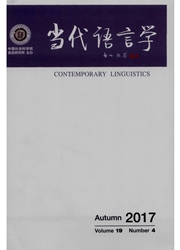

 中文摘要:
中文摘要:
语言加工的单机制模型认为,加工第二语言必须依靠第一语言脑网络,然而单机制模型无法解释双语者如何加工第二语言的语法特异性信息,即为什么二语熟练程度的提高并没有缩小语法加工的激活差异程度,以及为什么早期双语者也存在激活差异等。本研究提出的双语者语言加工的双机制模式,以语言加工的模块化特点为理论基础,强调专属脑网络参与语言特异性信息加工的必要性,为合理解释当前研究的新发现和争议问题提供新的思路。
 英文摘要:
英文摘要:
Languages are uniquely human. Mastering more than one language is becoming common and important in globalized modem society. In the neurolinguistic field of bilingualism, researchers wonder how bilinguals modulate brain resources to incorporate two languages in the same brain. Debates arise in two areas: 1) is there a unique neural network, or are there rather spatially segregated networks subserving two ( or multiple) languages in the human brain? 2) what are the determinants of activation differences between languages in bilinguals? The single network hypothesis proposes that the second language (L2) processing relies on neural mechanism of the first language (L1), and the activation difference comes from cognitive control. However, it fails to explain some research disputes. For example, how bilinguals process grammatical features of L2 which are lacked in L1; why intensive practices cannot narrow activation differences of grammar processing between the two languages; why early bilinguals also show neural activation differences. The dual mechanism model which the current study proposes is based on the theoretical rationale that language features are processed by different modules, as a great many brain imaging studies have suggested a correlation between increased activity in specific cortical areas and specific language functions. Inter-hemispheric differences in topographic specialization for L1 and L2 has been supported by clinical reports of unbalanced language deficits in stroke patients. Functional imaging researches also conclude that L2 is largely processed in the same brain regions as the first language, but to some degree in different brain regions from L1 either. These findings suggest that brain activation differences are processed by specific brain regions subserving linguistic features, even in bilinguals who access the second language environment early. On account of the independence of two languages in both early and late bilingual brains, it is arbitrary to declare that
 同期刊论文项目
同期刊论文项目
 同项目期刊论文
同项目期刊论文
 期刊信息
期刊信息
